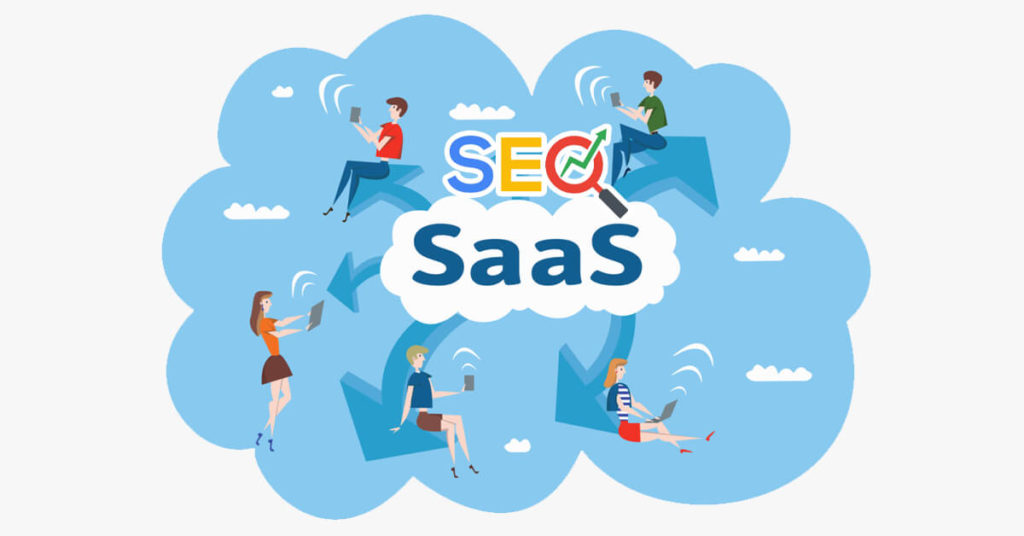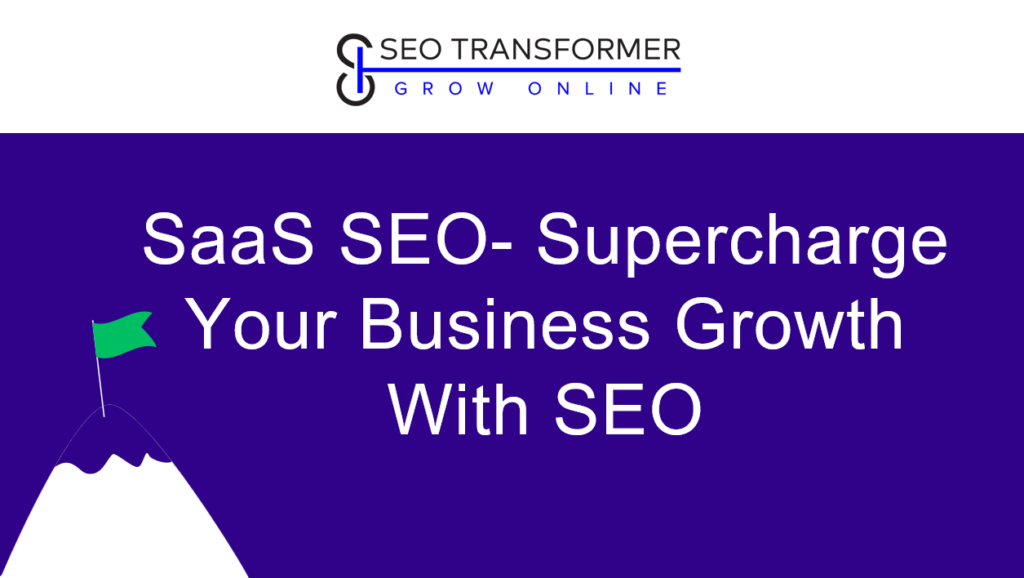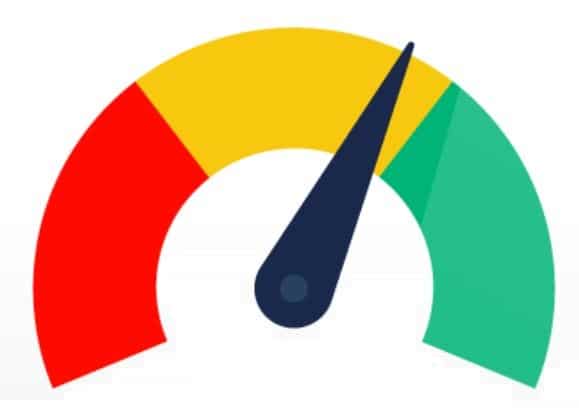SEO for SaaS (Software as a Service) companies cannot be confused with generic SEO. Instead, it requires specific tactics to be applied to this specific business model and user needs.
The SaaS market has been flourishing with each passing year for over a decade now. It is a highly competitive industry. SaaS companies can be extremely profitable and capital-efficient. They need less than $10m in funds to build a large profitable business. They need to apply effective digital strategies that continuously drive results to sustain growth.
Customer loyalty is key. As SaaS customers do not need to install any software or application or run updates, it is easy for users to shift to other service providers. SEO helps you better understand the evolving user needs.
Nonetheless, SEO for SaaS companies is perhaps the most effective strategy to successfully scale your business and stay ahead of other market players. It helps you apply several effective strategies to grow your SaaS business, such as:
- Acquiring new customers through sourcing new user searches and niches
- Building (and optimizing) online presence through organic performance
- Improving and diversifying your SaaS product offerings through user and competitive knowledge
In this blog post, you’ll find everything from the basics of SaaS SEO to explanations about why SaaS firms need an SEO strategy.
What we’ll cover in this post:
Introduction about SEO (Search Engine Optimization)
SEO is an acronym for ‘Search Engine Optimisation.’ In the simplest of understanding, SEO refers to the process of improving your website in order to enhance its visibility, especially when users search for products/services related to your business in search engines like Google, Yahoo, Bing, and others.
The superior visibility your website has on SERPs (search engine result pages), the greater chance you’ll have to garner attention and attract potential and existing customers to your business.
Since organic search is the most prominent way for users to access online content, a well-thought and well-designed SEO strategy can prove vital for improving your site’s quality and quantity of traffic.
The ultimate aim of SEO is to get your landing pages, product/service pages and blog content as high on SERPs as possible. The higher positioned you are, the greater traffic you receive. Additionally, SEO also focuses on website’s content and technical optimisation as well as backlink building.
Why SaaS Companies Need an SEO Strategy
SEO has evolved drastically over the past decade. However, one thing remains constant: The bulk of web traffic still stems from organic traffic, i.e., search engine users or visitors.
This is precisely the reason why search engine optimisation is still an extremely crucial marketing channel for not only SaaS firms but also for almost every other type of business in the digital landscape. If your brand fails to be discovered on search engines easily, you will miss out on A LOT! And worse, you will be effortlessly leaving a massive chunk of the pie to your rivals.
Nonetheless, it’s important to note that SEO is even more critical for SaaS companies than other mainstream firms. SaaS ventures are typically disruptive and often bring innovation to the market and/or even create new markets. However, we can’t deny that inventive solutions typically necessitate substantial time to foster awareness.
After all, how can an individual find the answer to a problem without really knowing that the solution for their problem truly exists?
SEO is becoming all about producing the most personalised experience for your site visitors. And remember that content will always be the footing of search. Hence, optimising the content on your page will help you drive organic traffic to your website and increase your search engine rankings.
This is precisely why SEO and content are such a killer combo, and more importantly, why SEO for SaaS companies is so important.
Saas and performance marketing
Several SaaS firms turn to performance marketing (social ads, PPC, affiliate marketing, etc.) to swiftly scale new customer acquisition. Nevertheless, many are now realising that the expenses in doing so are snowballing and that depending solely on the paid acquisition can cause major financial issues.
But when they reduce or turn off paid adverts, the traffic stops.
This is precisely why it’s imperative to have a strong SEO strategy for SaaS companies. SEO can encourage consistent traffic and foster exponential organic growth. Perhaps this is why several SaaS firms raise their investment to diversify traffic sources and keep customer acquisition expenses sustainable.
Personas & Problems: The Secrets to SaaS SEO
The two things that make SaaS SEO so different from SEO for other kinds of businesses include:
- Personas
- Problems
Think of SaaS SEO in terms of ‘personas and problems,’ and you’ll start understanding what strategy can drive the right traffic to your platform and display it as a solution.
Not many businesses understand that the key to growth and success is hidden in knowing their target personas and devising a strategy that puts their platform in front of these people when they hit the search button on Google or any other search engine on the web. Target the audience, and they would merely consume your content without moving any further into your sales funnel.
Let us understand how searchers usually discover businesses – they are essentially seeking solutions to their problems. They have an impending need that demands satisfaction via a solution. They might already know that a software platform exists, or perhaps they don’t. Irrespective of everything, the only thing all your customers would have in common is that they’re facing a problem. And your job is to prove that your platform can solve it.

Role of SaaS Keyword Strategy In Sales Funnel Optimization
If you wish to succeed with SaaS SEO, it’s imperative that you first understand how keyword research is performed. This can help you find search queries that your target audience uses in order to find software/services just like yours.
Ace the SaaS keyword strategy, and you’d find your business in a much better position to propel growth. However, before we start exploring what a proven path to a successful SaaS keyword strategy looks like, let us first discuss the different kinds of keywords that form a typical SaaS SEO strategy.
To help you better understand how different keywords break down across the sales funnel, we’d be using a CRM sales tool as an example.
TRADITIONAL SaaS MARKETING & SALES FUNNEL
- Middle of The Funnel
- Bottom of The Funnel
- Top of The Funnel
Top of the Funnel (TOFU) Keywords for SEO SaaS
Put simply, top of the funnel or TOFU keywords for SEO SaaS are the ones used by your target audience when they’re searching for an answer or solution to their problem. At this point, there’s a high likelihood that they aren’t aware a software platform like yours exists.
Here are some of the good TOFU keywords that the CRM platform ranks for:
- Sales script
- Sales management process
- Sales follow up email
Bear in mind that their searches are not intended to find platforms like the CRM platform . Rather, they’re usually made by individuals working actively in sales. So there’s a decent probability that they are in fact, the target audience of the platform.
Another thing to know about top-of-the-funnel keywords is that they generally make up the highest volume of clicks and searches. However, they are the least targeted and typically have the lowest conversion rate. But that is okay. These keywords are primarily designed to increase awareness of your business and position your brand as a decently familiar option further down the sales funnel. Moreover, it’s usually blog content that ranks for such discovery-phase queries.
Middle of the Funnel (MOFU) Keywords for SEO SaaS
Middle of the funnel or MOFU keywords for SEO SaaS target prospects who already know that some solution exists. However, they have not begun exploring their options in-depth yet. Put simply, they (prospects) are generally searching for keywords that can help them find the right solution.
Here are some of the MOFU keywords that the CRM platform can target:
- Sales CRM
- Sales software
- Sales management software
At this level, there is usually an intent to purchase, but most probably not right away. Here, prospects might consider and compare all available options. Therefore, earning visibility should be your core focus in this step of the process. Generally, feature or product/service landing pages (or something similar to it) will rank for these queries.
Bottom of the Funnel (BOFU) Keywords for SEO SaaS
Once your prospects reach the bottom of the funnel (BOFU), it is time to stop contemplating and start making final decisions. By now, they are aware that a solution exists that can help answer their problem, and also about who’s providing these solutions. To hit the nail in the head, they simply need to decide which platform best solves their problem.
In terms of keywords, these prospects already know about your product/service and search queries with a strong intent to purchase.
Here are some of the BOFU keywords that the CRM platform can rank for:
- Sales CRM reviews
- Sales CRM pricing
- Sales CRM (brand name) vs. Salesforce
This stage provides SaaS companies the final opportunity to convince a prospect that their platform can best fulfill their needs and also provides them the chance to sign up new customers.

Ranking Factors for SaaS SEO
The SaaS business model can be easily explained in a few sentences. However, when it comes to SEO, the concept is comparatively a bit more complex. Several factors impact how a particular website ranks on search engine result pages (SERPs). It’s important to note that these factors keep changing all the time as search engines like Google are artificially intelligent. This is why it’s crucial to understand the industry to see results.
Here are some of the leading factors that can significantly influence directly or indirectly how a website ranks on Google according to importance:
User Engagement Metrics
This refers to how visitors engage with your website and is typically measured by things like:
- Content interaction and clicks
- Page views (number of pages viewed on your website)
- Dwell time (the length somebody stays on your website)
- Page exits (what page visitors exit on and whether they hit the back button from your website early)
Some of the most important ranking factor metric Google considers is user engagement and how they find your content. High and superior quality engagement is equivalent to a better user experience. This means your website content should be unique, relevant, well written, and optimized to make it easier for users to find your website with a Google search.
One of the leading sources of revenue for Google is paid ads; due to this, Google focuses greatly on user engagement metrics. More importantly, these metrics are changed continuously to ensure the most appropriate page takes the lead on SERPs.

Link Metrics
For several years, SEO experts have used link metrics as the most reliable way to drive Google rankings. Some of the link optimizations strategies are:
- Optimizing the domain authority of your website
- Linking a high quality external domain to your website
- Creating links internally on your website
- Choice and relevance of anchor text directing to your website
SaaS marketers must also know and fully understand the fundamentals of “followed vs no-follow links”, along with how each approach points back to a website. It’s equally important to know how the link is placed on the given source page. Numerous other elements determine whether a link building strategy succeeds or fails. Nonetheless, these are the most vital.

On-site Content
Although this broad category metric entails numerous ranking factors, it can be narrowed down to a few most content integral factors, including:
- Use of relevant semantic keywords and the coverage around the provided topic
- Positioning of targeted keywords in your content (for instance, whether they’re placed in meta title, meta description, page headers, introductory and conclusion paragraphs etc.)
- The way your pages are optimized for targeted keywords within the website’s navigation and structure
- The way your content targets particular words
- Cross-linking of web pages with other relevant pages on your website
- Content’s quality, length, elements and how well it satisfied the intended user search
- Interactive content features (for example cards or tiles that link to other relevant pages and/or features)
Indeed, several other factors related to on-site content can also determine whether your page or site ranks high on SERPs. Nevertheless, it is crucial to understand that the quality of your content is paramount for readers. Therefore, you should endeavour to provide them with unique, relevant, and useful information about your product/service or the industry you’re functioning in.
Not only will this encourage organic traffic through other channels, but it will also increase the chances of recurring visitors and shares – all good things that search engines like Google recognise and use for ranking on SERPs.

Usability & Technical Structure
Although the technical structure and usability impact user engagement, these factors considerably also influence the way a website is crawled and indexed as well as the time it takes to rank on SERPs. For example, the lesser time and resources search engines have to spend on crawling and indexing your website, the better it’s likely to rank.
The technical structure of a website affects factors such as page loading speed. This factor will also play an integral role in user engagement. Websites with quicker loading times tend to witness greater user footfall and engagement. After all, nobody likes to stay on pages that take forever to open up in today’s fast-paced world. In addition to this, Google also considers how well a website’s link architecture is constructed and the number of HTTP status errors present (e.g. 404s, 500s, 30Xs, and so on).
These elements surface when Google crawls a website and its sitemap.xml and robots.txt files (files that can help search engines better understand your website assets and index it correctly) . Moreover, content delivery networks (CDNs) are also analysed for how well they help speed the delivery of a website’s resources to users.
Think of these SEO ranking factors as a good foundation for a well-built and useful website for search engines and users.
We know all these factors are super technical, but they ultimately affect your website’s traffic, user engagement, and, more importantly, ranking on search engine result pages. Most of all, they are a good foundational base for a well-built site. Once you’ve considered these ranking factors, the next step is to use a well-planned framework to organise and convert your efforts into actions with the ultimate aim to benefit your SaaS SEO project.
Remember: Over time, Google will evolve and the search engine optimization industry will adress new ranking factors, tactics, strategies, and actions. Therefore, be ever ready to adjust to those changes and undertake measures that lead to positive results. For this, you’ll need an SEO framework that has especially been developed with this in mind and continues to deliver value even if Google brings about new changes.

SEO Strategy Can Increase SaaS Conversion Rates: Fact or Fallacy?
That is perhaps one of the top concerns of every SaaS manager thinking to invest in an SEO strategy.
If you’re looking for a short answer: Yes, a well-planned and implemented SEO strategy can boost SaaS conversion rates.
If just knowing that isn’t enough and you need a longer explanation, keep reading ahead.
It’s crucial to note that a strong SEO strategy might not win you several conversions right away, but it very much can make a huge difference to your bottom line. Here’s how: A high-quality SEO strategy coupled with an equally good content plan will help SaaS companies connect with more prospects and ultimately convert more of them into recurring loyal customers.
As a SaaS firm, it is highly crucial for you to engage and foster connections with potential clients online. You perhaps already very well know why. No connection/user engagement = No leads/customer retention. However, over time, as the SaaS niche increasingly becomes more competitive, achieving this can be easier said than done.
You might have already heard this once or twice in your marketing journey: To achieve a steady stream of organic website traffic, you simply have to appear high on search engine results pages (SERPs). The higher you rank on SERPs, the greater traffic you’ll receive.
On the contrary, the lower your site appears on the SERPs, the lesser traffic you’ll get. Just think about it: When was the last time you moved on to the second page of Google search results? Or when was the last time you scrolled down past the top five-six results on the first results page? You most probably can’t even remember. We certainly don’t.
This is where the best and top-notch SEO services for SaaS firms enter the picture. They make sure your SaaS business reaches where you need it to by helping you rank for your specific business-critical keywords. Higher rankings on Google SERPs lead to more eyes on your offerings and eventually more probable conversions. But when it comes to how an impeccably tailored search engine optimisation strategy can escalate conversion rates for your SaaS software solutions, that isn’t the end of the story.
A well-thought-out and robust SEO and content strategy will position you as an authority in this increasingly crowded ocean of SaaS firms. Through SaaS SEO, potential customers will research and see that you have extensively written (or published) about very topics they are interested in and need help with.
SEO will help you get featured on prominent third-party forums and websites. These are some of the many things which unsure potential clients consider when it is finally time to take the leap with a SaaS solution. Gradually, the best SEO strategy for SaaS will also assist you in converting more of your website visitors into loyal clients and increase their overall volume.
Having an SEO strategy for SaaS is a win-win for both you and your business.
Best SaaS SEO Strategy to Drive Organic Traffic & Leads To Your Site
When it comes to SEO for SaaS, it’s crucial to know that there’s no one-size-fits-all strategy to fulfil the SEO needs of every software as a solution business. Just like several other things in the paradigm of digital marketing, the best SEO strategy for SaaS firms is the one that works most effectively for your business.
A good SaaS SEO service-providing company will initiate the SEO process by taking a deep dive into your business and your existing marketing efforts. In addition to this, they’ll also undertake technical SEO audits and leverage state-of-the-art AI tools to really get under the skin of your firm.
Plus, it is not just your firm that should be getting the forensic treatment. They must also concentrate the microscope on other market competitors. With the help of competitor and user intelligence, SaaS SEO firms can provide you with an effective and highly user focused keyword recommendations and competitive analysis. You can begin targeting search terms and keywords that you might presently be missing out on.
In addition to this, thanks to quantitative and qualitative research, SaaS SEO companies can also properly map out an SEO strategy and a content marketing plan that best matches their business goals with the needs of existing and potential customers.
In short, SaaS SEO experts can effectively target potential clients at every stage of the marketing funnel.
If you don’t know where or how to start, we suggest availing the services of SaaS SEO experts. They can help you in craftingthe strategy that helps you successfully target and reach out to your wider niche audiences and generating qualified lead and sales.
The best SaaS SEO strategy will assist you in creating and optimizing content that best suits your target accounts at every step of the customer journey. They’ll also ensure your business is visible to as many prospects as possible. Making it simpler for you to move leads from the awareness of their problem to the evaluation of your software solution, gradually inciting a purchase, and then to the last stage of retention.
That’s the type of SaaS SEO strategy your company needsto compete and thrive.
A 10-Step SaaS SEO Strategy
A successful SaaS SEO strategy demands exceptional planning (scope, approach, and content calendar), process (the cadence of content creation), and reporting (setting KPIs and evaluating where you stand in the SERPs in contrast to other market players).
To help you take the lead, we’ve formulated the cutting-edge framework for building the best SaaS SEO strategy for your business. This framework will allow you to drive sustainable site traffic, along with short-term and long-term business growth.
Here’s our 10 step process to build the most effective SEO strategy for your SaaS venture.
Step #1: Conduct A Website Audit
Performing a website audit creates a sturdy foundation for a successful SaaS SEO strategy for your firm.
To create a successful SaaS SEO strategy, the first step is always to perform a website audit (content, technical and backlink audit). Doing this is an integral aspect and extremely useful tool of an SEO strategy that enables marketers to quickly identify what’s working for your SaaS website and what requires modification.
The audit also detects any weak loopholes that can be enhanced. Making sure your site is in line with the current SEO trends is a major part of a successful SEO strategy.
Step #2: Set Goals & KPIs
The second most important facet of any SEO strategy – whether SaaS or not – is to set goals you wish to achieve through it as well as the key performing indicators (KPIs).
Without goals and KPIs in place, setting a solid SEO strategy for SaaS becomes much more challenging.
As SaaS company you may have the following goals:
- Maximize monthly recurring revenue
- Minimize churn
- Minimize the cost for every customer acquisition
- Maximize the average revenue per customer
- Maximize the lifetime value of a customer
This can be achieved by:
- Attracting more website visits
- Converting visitors into leads
- Turning sign-ups into users
- Upgrading users
SEO KPIs to track may include:
- Traffic by Source
- Traffic by Page
- Click-through-rate
- Bounce Rate
- Keyword Rankings
Step #3: Define Target Audience (Personas)
For long-term SaaS SEO success, you must know exactly who you are targeting. You may ask why is that so important? So that you can solve their issues by presenting your SaaS platform as a solution. Remember, the better you understand and know your target accounts, the more relevant your software solution can be to their needs.
To do so, you can produce content that sufficiently answers their search queries and learn what it takes to encourage them further down the marketing funnel. And with all this information in view, define your customer personas as it is one of the most important steps in putting together a SaaS SEO strategy. Remember, it is all about creating a picture of exactly who your SEO efforts must reach.
To understand your target personas, begin by talking to internal teams, such as sales teams, social teams, paid teams etc., and collect as much data on your existing accounts as possible.
Next, craft a rough sketch of the different groups of customers who are currently using your platform, check if any are missing, and try to understand who your most engaged clients are.
Step #4: Analyze Competitors (Direct & Indirect)
To drive your SaaS venture into new heights and success, you must know the SEO strategies of all your competitors, along with how they typically drive organic traffic. This is not applicable only to your direct rivals.
For the best SaaS SEO strategy, you will also have to dig deeper into the SEO strategies of your indirect competitors. In fact, several experts believe that perhaps indirect competitors are equally (if not more) important to consider in the SaaS business than pretty much any other industry.
Direct competitors : Refers to those market players that provide the same service as you. Their platform may have somewhat different features. Nonetheless, it serves the same ultimate purpose and facilitates customers in solving the same issues.
Indirect competitors : Refers to those market players whose solution is essentially different from yours, but it helps your target audience solve the same problems.
For example, a direct competitor of Netflix is Amazon Prime video. An indirect competitor for Netflix would be a theater.
It’s crucial to learn as much as you can about how other market players stack up, what works for them and what does not. Watch out for the products and services of both direct and indirect competitors that are competing with yours on search engine result pages (SERPs). Analyze their SEO strategy and feed this insight into your own roadmap and find content gaps that can be used as opportunities for your SEO strategy.
Step #5: Build A Keyword Strategy Based on Identified Problems & Personas
Finding and choosing the relevant keywords for your SaaS site is indispensable for an effective SEO strategy. When searching for the right keywords, try thinking like your prospects and use the most relevant search words that somebody would use to find your site. It would be best if you were still open to capturing new keyword opportunities you have not thought of.
By incorporating relevant user centric keywords in your SaaS SEO strategy and website content, you can guarantee that your business site gets discovered for all the right search terms. To find the right keywords, begin by noting down the list of problems your SaaS venture can solve for prospects as well as the topics they (target audience) are seeking to answer through the web. Do not limit yourself to a specific number of keywords. Instead, keep going till you aren’t able to add more.
When finding keywords, think about:
- Queries that prospects are asking
- Problems and challenges they’re facing
- Similar subjects that share an audience
Once you gather a comprehensive list of keywords, make sure to search those keywords on Google and other search engines and check what content is displayed out there and how relevant it is to your product and the content you plan to create.
Next, you will have to craft a content strategy around these keywords.
Step #6: Define Relevant Keywords and Optimize Landing Pages
Defining the right keywords to optimize your site’s landing pages can attract prospects that are closer to converting.
You will have to ensure you are targeting the right keywords for your landing pages of your product, features and offerings. Those should include keywords targeting the bottom of the sales funnel.
Once you start ranking for these search queries, you will drive traffic that’s relatively closer to converting. These searchers are actively looking for an answer, so make sure you cover all fronts and do not miss out on the ways your target audience is searching online.
A landing page keyword for a SaaS fundraising software would be a ‘Private equity fundraising campaign’ or ‘Private company fundraising campaign’. This would distinguish it from tools that provide fundraising software for non-profit organisations or crowdfunding campaigns.
You also need to have an editorial content plan for your blog content (a roadmap for content deliverables for the year) that addresses:
- Your website theme depending on your core business activity
- According to your business objectives (awareness, education, sell)
- In connection with a calendar of launches, events, promotions, and seasonality
- How often do you need to publish content? What is the posting frequency for your competitors?
- Do you create more than one type of content? Think of repurposing content
- What are users’ questions? Use tools to help you uncover them, such as alsoasked.com tool.
A well-planned editorial content will help you target new niche audiences and increase your website’s chance to rank higher on search engines. Google and internet users love informational content. With this, you can target top of the funnel user searches, and once you link blog pages to main landing pages, you will be channelling users closer to conversions.
Step #7: Devise A Comparative Keyword Strategy
Many SEO strategies do not include this step. However, once your potential customers reach the end of your sales funnel, there is likely that they will be comparing different software solutions.
Comparative keywords are extremely powerful as they provide opportunities to get in front of somebody that’s about to sign up either to your platform or your competitor. Focus on these search queries and persuade prospects that you are the best answer to their problem. Be sure to emphasise the reasons why your SaaS software solution is better and compare your offerings with other key market players.
Even if the search volume is low, capturing these lower-funnel searches can be significantly useful as they have great conversion chances. So, if you know that there is another SaaS platform available that can be used by your prospect instead of yours, we strongly suggest you build a comparison page. Get in there before any other competitor does. In case someone is already targeting these search queries, make sure your page is better.
Step #8: Generate Original, Useful & High-Quality Content
The success of your SaaS SEO strategy is deeply entrenched in producing great content. However, if your goal is to outrank competitors, you will have to create content that’s much greater in quality than theirs. This is true for both your product content as well as your blog content.
You may wonder what good content is? Simply put, it is the content that answers the prospect’s search query better than every other player out there. Some common aspects of great quality content include:
- Content that penetrates deeper into a topic (not the same as being longer)
- Lengthier content depending on the topic (for some topics, the shorter text is better, or even an image is better than a text altogether)
- Video/images to make a landing page more engaging (improves user experience)
- Easily readable formats (use content formats that have proven to do well, ex. Case studies, how-to-guides)
In addition, be careful not to fall into the trap of evaluating your competitor’s word count and writing 30% more words. Because that isn’t at all what creating better content is about. More on optimal page word count here.
Instead, begin by understanding the search intent of your prospects while also examining the pages of your market rivals. If writing isn’t your best trait, consider working with a specialist in order to determine what could be done better when creating content for your SaaS platform.
Don’t be afraid to call on your users and ask their opinion on ways to make your content better.
This might sound simple, but even the most seasoned marketers end up creating content without sufficient product knowledge. Therefore, it is highly recommended to team up with an expert and figure out ways to improve (and enrich) your site content.
You require genuine feedback from real users and experts to stand out among your competitors. Only then will you use this as a roadmap to success.
Step #9: Don’t Disregard On-Site & Technical SEO
Just because successful SEO strategies for SaaS companies or rather all kinds of ventures are typically powered largely by content does not mean you should ignore the significance of on-site and technical SEO.
Suppose your website hasn’t been sufficiently optimised from an on-site perspective or suffers from a technical issue. In that case, unfortunately, your site will be held back from realising its full potential. To improve and ensure your platform’s technical SEO is up to the mark, you can use website audit tools available online. These tools will analyse your site and find opportunities for improvement. You need to check what is relevant to your website appearnce on search and prioritize fixes. This will require experience to know what issues to fix and what to refrain from fixing.
. You will also need to check main landing pages one by one for SEO elements to make sure all content is properly displayed on search engines and are well optimised for your targeted search terms.
Step #10: Earn Backlinks Through Content Promotion
Remember: Without backlinks, your content – no matter how much time and effort you’ve invested in it – will struggle to rank well on SERPs, at least for competitive keywords. Therefore, to gain backlinks, you will have to create a robust link-building strategy to earn relevant links to your site’s content.
But that’s not all that links can accomplish for your SaaS business. Besides helping you rank on Google, a well-crafted link building strategy can also drive referral traffic, position you in front of target audiences as well as underscore you as an industry expert.
Some effective link building techniques for SaaS companies include:
- Links from partners
- Broken link building (pages that display 404 errors)
- Use content formats proven to generate links (ex., Infographics, whitepapers, data/research, webinars..)
- Shed light on best practices, tips, guides, case studies
- Create viral content (look for trends, popular topics, most shared content)
- Highlight and mention others, mention and interview industry leaders key influencers (Don’t forget to ask to be mentioned on their platforms as well)
- Unlinked brand mentions (mentions of your website without adding a link to it)
Tip: Regularly crawl your website to check for broken links as they can affect the user experience which is a ranking factor.
Backlinking is all about forming links with other sites that direct traffic to your platform. Just be sure that those links come from credible and trusted sources if you wish to see noticeable results.
There you have it – our 10 step framework for building a winning SEO strategy for your SaaS business. There’s just one more thing we’d like to highlight. Once you build a SaaS strategy with the help of these processes, be sure to track your progress as you move ahead in the SEO journey.
You’ll find several tools online that can help you monitor and measure the progress of your SaaS SEO strategy. Additionally, you can also generate reports related to your keyword rankings and the growth you’ve achieved over time with these tools.
Track the most valuable content on your site and see whether there has been an increase/decrease in traffic and conversions since you started. Detailed performance reports are crucial in helping your SaaS SEO strategy to improve and thrive continuously.

Our SaaS SEO Agency Services
Transform your digital presence with Stransformer, your go-to SaaS SEO Agency Services partner. Our commitment to excellence and innovation in search engine optimization ensures your online success. With a proven track record of driving organic traffic, enhancing website visibility, and boosting conversion rates, we don’t just offer services; we deliver results. Our team of seasoned SEO experts leverages cutting-edge strategies and industry best practices to tailor a customized approach for your business, no matter the size or industry. We’re not just about rankings; we’re about transforming your brand’s digital identity into a force to be reckoned with in the online landscape. Join us on this transformative journey, and let’s make your website a magnet for success.
Here is a list of our SEO services, designed to enhance your SaaS business:
SEO audit
We uncover all website growth blocking elements by conducting a full website audit that covers indexation, accessibility, speed, Core Web Vitals, Metadata, on-page SEO elements and other technical elements important to your website. We propose solutions, and collaborate with your tehnical team to organise and prioritise fixes.
Premium SEO Content
At our core, we specialize in producing high-quality SEO content meticulously crafted for your SaaS business. Our proven process is the secret behind our content that not only engages but also drives results.
Reporting & Analysis
We don’t merely craft SaaS SEO strategies. We measure and track the performance of all your SEO campaigns. We carefully set growth KPIs, analyse and adjust activities to foster growth and revenue.
Content Marketing
Producing and distributing content across multiple channels to improve organic rankings, brand awareness, and qualified Lead generation
On-site Optimization
Optimising website content, structure, internal links, and usability to escalate organic rankings and conversions.
Backlink building
We help you set the backlink strategy and the needed assets to make you present on important niche portals and grow your reputation online.
Our 3-Step SaaS Marketing Growth Strategy
Our SaaS SEO strategies are much like roadmaps that lead to success. With years of experience, our experts understand the myriad nuances of the SaaS industry. We also know what you do and how to do it. All our SEO strategies are customised to what brings you growth.
This is made possible with our extensive research the development of our results-driven SEO strategies that consider every facet of your company to craft a tailored plan that carries your brand to the next level and way above the competition.
Here’s exactly how we do it:
Step #1: Tailored SaaS SEO Game Plan
Our SaaS SEO game plans are based not only on your existing demands but also on future possibilities. Hence, irrespective of how often SEO best practices evolve, your SEO plan will successfully endure the constant torrent of digital disruption. Additionally, our SaaS SEO strategies are specially tailored to align with your broader sales and marketing goals.
Step #2: Premium Optimized Content for B2B SaaS
With each passing day, Google makes it harder for SaaS businesses to rank high on SERPs. That’s one of the leading reasons contemporary SEO needs a different approach. We leverage optimised content and ensure all our approaches are equipped with the latest industry changes, separating us from other SEO agencies.
Our SaaS SEO framework seamlessly combines user-driven keyword research, SEO optimised web content, competitor analysis, and tailored link-building outreach.
Step #3: Reporting and Optimization
We also create comprehensive monthly reports to track the success and growth of your SEO campaigns. Doing this also helps us identify additional SEO opportunities on which we could capitalise in the future. Throughout our partnership, the SaaS SEO experts will relentlessly iterate and optimise our content and SEO efforts to accomplish optimal impact and results.
Get Started!
Before we end this comprehensive guide: SEO is a longstanding process. The first significant increase in organic traffic might occur after four to six months of initiating your SaaS SEO strategy. By investing in a well-thought and data-driven SaaS SEO strategy, you’ll witness genuine returns on investment in the form of increased visibility, higher SERP rankings and greater qualified organic traffic.
Simply put, the more you work on your SaaS SEO, the better results you’ll get. Just like exercising, you won’t see results with SaaS SEO until and unless you stick with it! The sooner you start, the earlier you will see results and the sooner you can cut off on paid ads spend. Lastly, bear in mind that the world of SEO keeps evolving, so be aware of any new developments, especially those which might impact your business negatively. Keep all eyes and ears open and adjust your strategy accordingly.
If you think you can’t walk the SaaS SEO journey alone, feel free to reach out to us here and let us help you build a winning strategy!









